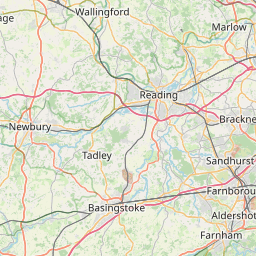Characterisation of JET deposition layers
Find Similar History 13 Claim Ownership Request Data Change Add FavouriteTitle
CoPED ID
Status
Value
Start Date
End Date
Description
Increasing interest in thermal and mechanical properties of tungsten and beryllium has been expressed by ITER in order to evaluate the links between material damage and lifetime of plasma facing surfaces. JET is uniquely placed to provide ITER relevant samples exposed in a tokamak environment for analysis. The aim of the project is to investigate the thermal and mechanical properties of plasma facing components exposed in JET. The project will undertake to perform micro-mechanical testing and microstructural investigation on materials such as tungsten and beryllium surface, and also beryllium rich deposits formed on surfaces. The analysis programme will utilise facilities at the University of Oxford Materials Department and UKAEA Materials Research Facility. Depending on the initial characterisation of samples there are several open questions which could form the central element of the research;
- the effect of plasma exposure and melting on thermal and mechanical properties of beryllium and tungsten,
- the effect of small concentrations of beryllium on tungsten on mechanical properties,
- mechanical properties of deposits and impact on dust formation.
Phase 1
Investigation of thermal, mechanical and microstructural properties of a range of plasma facing materials exposed in JET including tungsten, beryllium and beryllium rich deposits.
Identify samples with highest potential for further investigation under one of the research themes proposed.
Identify collaborations on laboratory-based materials or additional analysis techniques.
Phase 2
Development of nano-indentation and micro-cantilever analysis for fusion materials at UKAEA MRF.
Detailed understanding of microstructure and failure mechanisms at University of Oxford Department of Materials.
Phase 3
Identify fundamental microstructure influencing thermal and mechanical properties.
Link properties with JET exposure conditions.
Place research in context of component lifetime issues in a fusion environment.
The project will characterise the thermal and mechanical properties of long term exposed fusion plasma materials. The results will be the first of their kind on tokamak exposed samples to be provided for the fusion community. The results will be understood in terms of the impact of microstructure on the thermal and mechanical properties and provide a basis for predicting components lifetime.
In addition, the combination of tritium contamination and beryllium in real tokamak samples will challenge the forefront of processing and analysis of fusion materials, making use of the UKAEA Material Research Facility, part of the National Nuclear Laboratory consortium. This project falls within the EPSRC UK Magnetic Fusion Research Programme, contributing to the sub-theme Energy/Fusion. This student is following the CDT programme in Science and Technology of Fusion Energy.
Student is funded nominally 50% DTP + 50% CCFE
| University of Oxford | LEAD_ORG |
| United Kingdom Atomic Energy Authority | STUDENT_PP_ORG |
| David Armstrong | SUPER_PER |
| Sergio Lozano-Perez | SUPER_PER |
Subjects by relevance
- Physical properties
- Beryllium
- Microstructures
- Mechanics
- Nuclear fusion
- Materials testing
- Tungsten
- Properties
- Materials (matter)
- Properties of materials
Extracted key phrases
- Mechanical property
- Fusion plasma material
- Initial characterisation
- Jet deposition layer
- Beryllium rich deposit
- Microstructural property
- Mechanical testing
- Link property
- Beryllium surface
- Fusion material
- UKAEA Materials Research Facility
- Jet exposure condition
- ITER relevant sample
- Real tokamak sample
- Thermal
Related Pages
UK Project Locations









